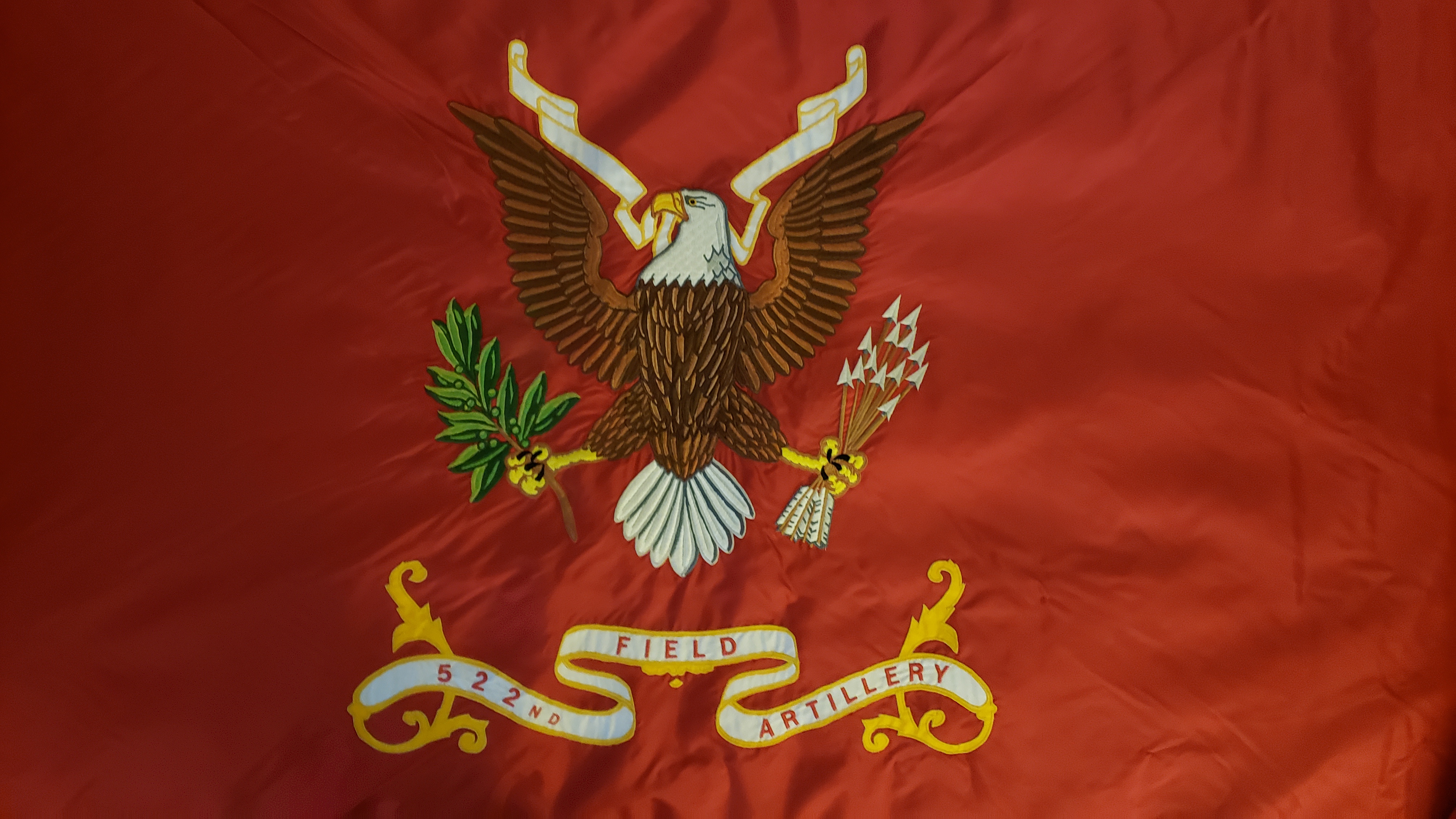 522nd Field Artillery Battalion in
"The Holocaust Corridor"
522nd Field Artillery Battalion in
"The Holocaust Corridor"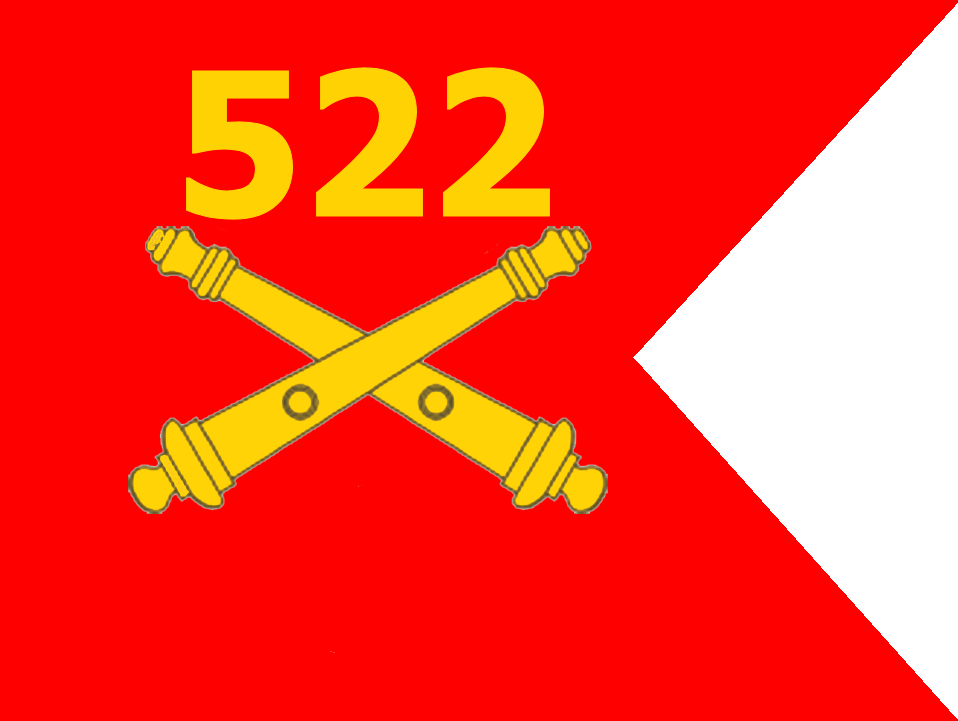
LEFT: 522nd Battalion Flag (Click for larger format); Right: 522nd Battalion Pennant
 522nd Field Artillery Battalion in
"The Holocaust Corridor"
522nd Field Artillery Battalion in
"The Holocaust Corridor"
LEFT: 522nd Battalion Flag (Click for larger format); Right: 522nd Battalion Pennant
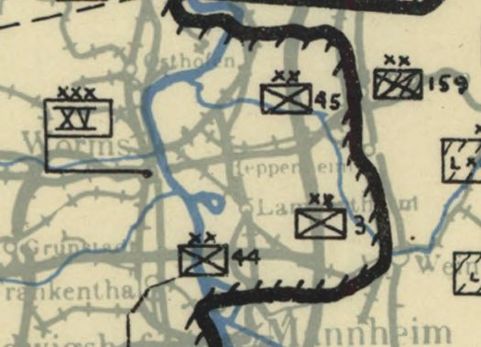 Click on image for larger format March 28, 1945 12th Army Group Situation Map showing the 44th Infantry Division with the attached 522nd FAB crossing the Rhine River south of Worms near Frankenthal on March 28, 1945 Public domain map from the Library of Congress |
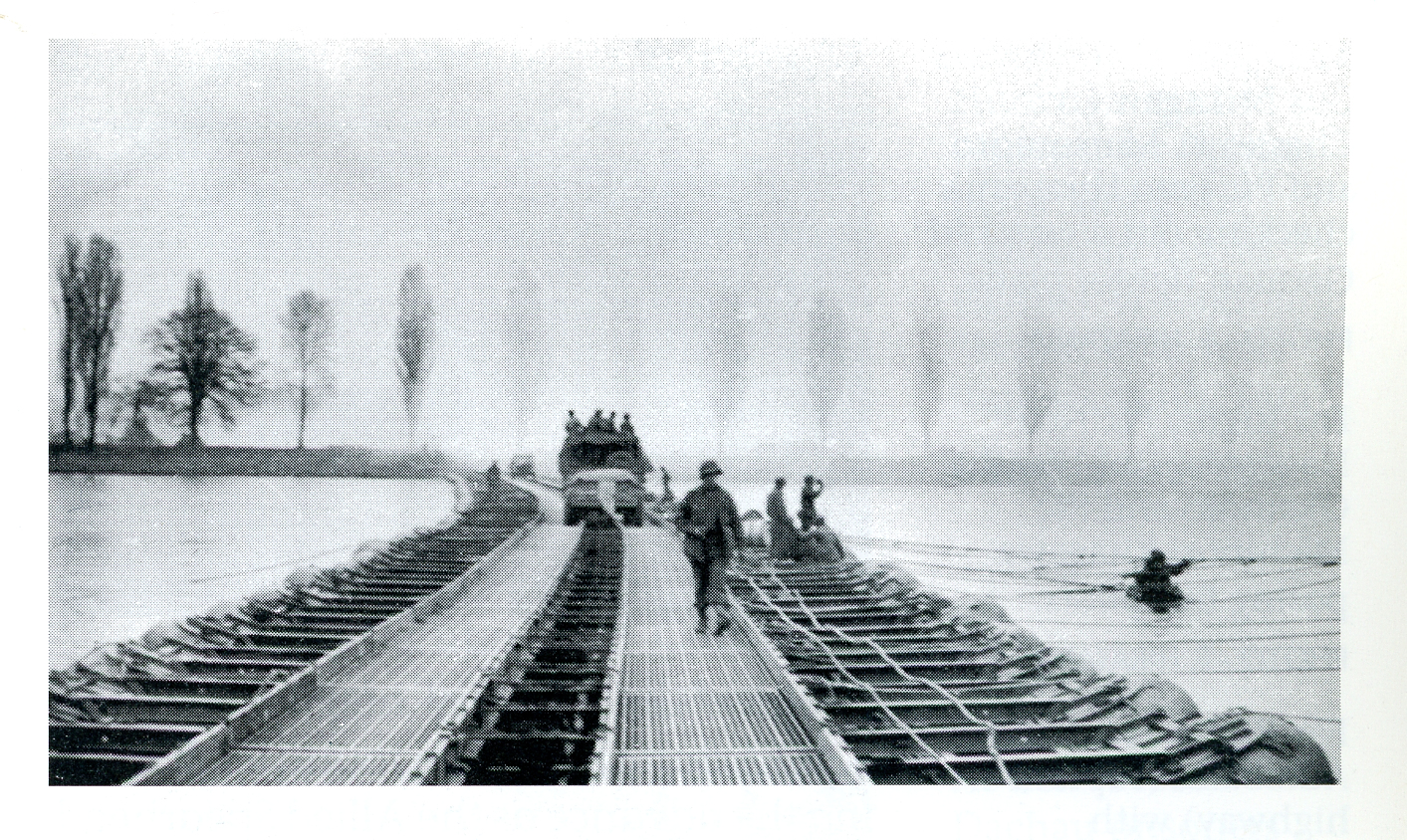 Click on image for larger format 522nd crossing the Rhine River on a pontoon bridge south of Worms near Frankenthal on March 28, 1945 Photo by T/5 Henry Ishida, Service Battery from Fire for Effect page 111. Copyright Henry Ishida. Used by permission of Laurie Oue, Henry Ishida's daughter. |
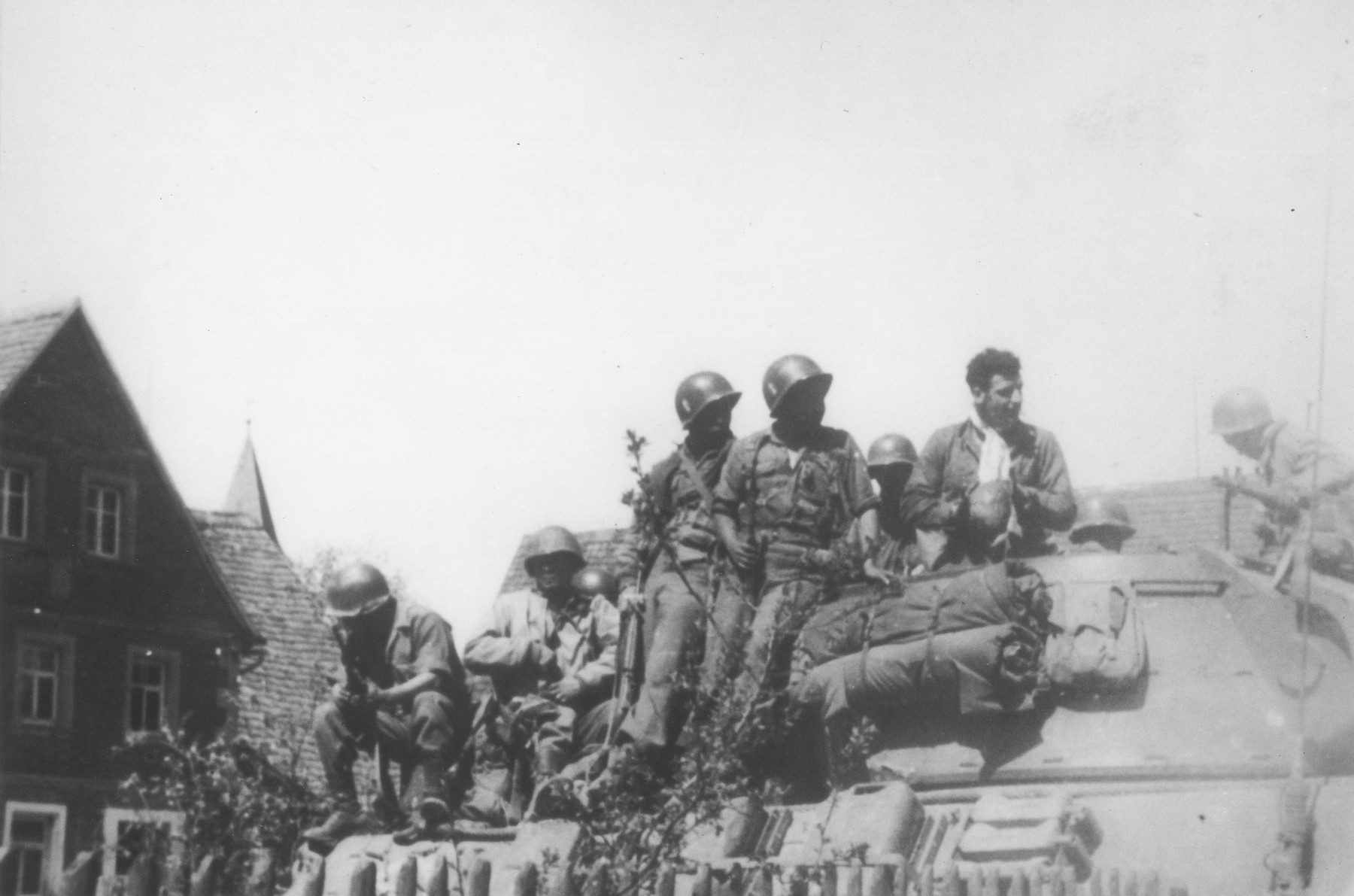
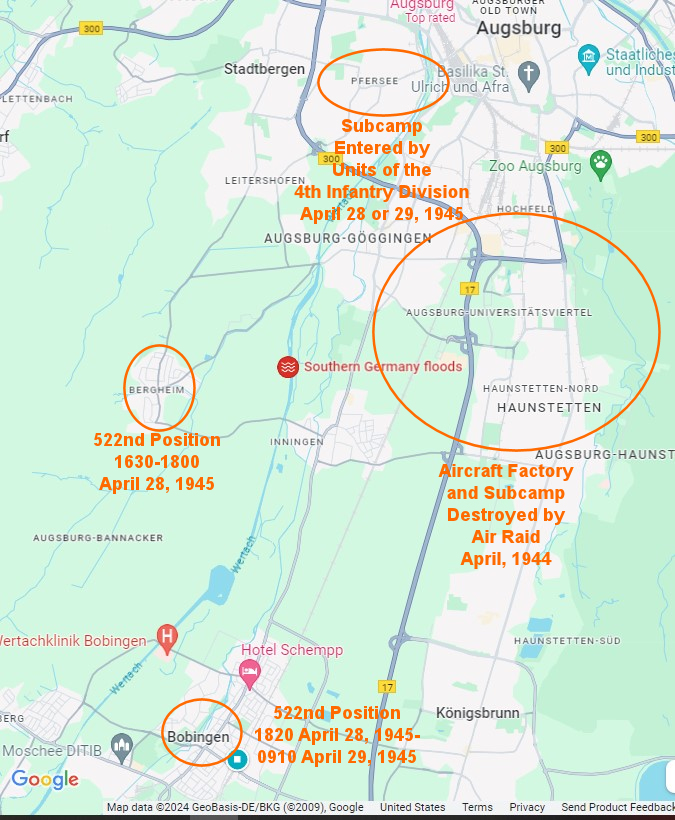
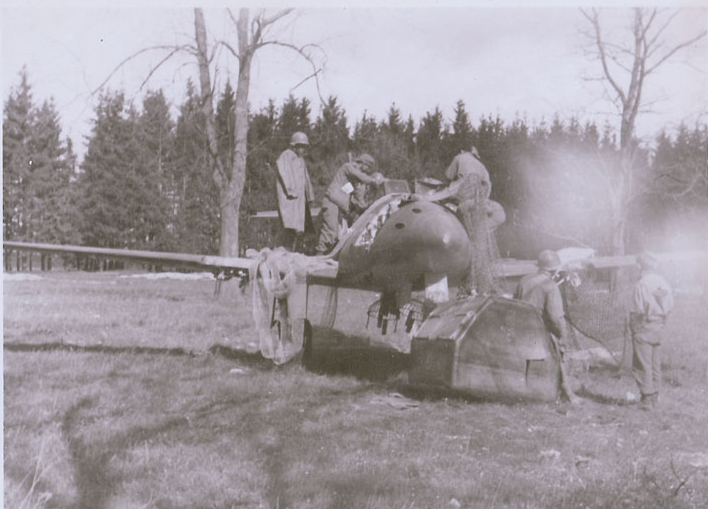 Photos by Staff Sergeant George Oiye, C
Battery of 522nd soldiers with the planes being assembled
by slave laborers Kaufering IV subcamp at the Lechfeld Airfield
near Hurlach.
Photos by Staff Sergeant George Oiye, C
Battery of 522nd soldiers with the planes being assembled
by slave laborers Kaufering IV subcamp at the Lechfeld Airfield
near Hurlach.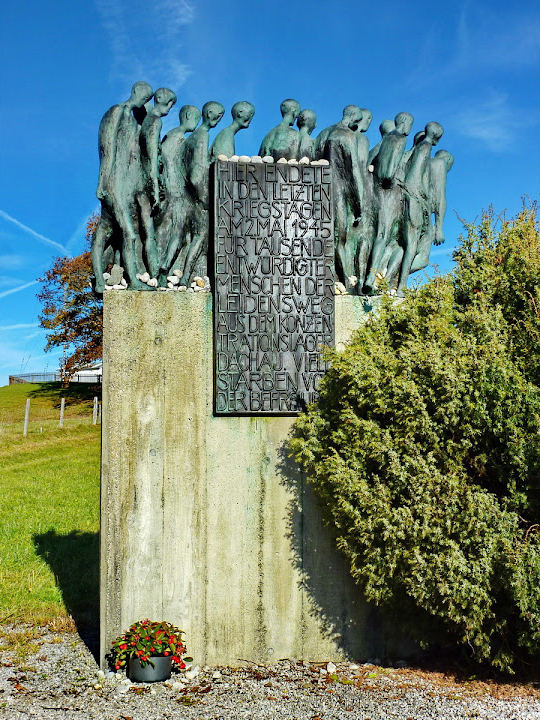 The 522nd Field Artillery Battalion
and the Waakirchen Death March Rescue: An Illustrated
Record
The 522nd Field Artillery Battalion
and the Waakirchen Death March Rescue: An Illustrated
Record| <<
Dachau Index << The 45th Infantry Division in World War II: An Unofficial Guide to Resources |
||
All items not in the
public domain  2021-2024 2021-2024The 45th Infantry Division in World War II: An Unofficial Guide to Resources Co-administrators: Leonard H. Cizewski & Judy Erwin Branham Last Major Update: July 12, 2024 Minor Revision and
Corrections: July 6, 2024
Last Reviewed: Posted:April 19, 2021 |
 |
Permission
and acknowledgements:
While almost all items on this site are in the public domain, please contact the administrators for instructions on how to acknowledge the source. Many volunteer researchers at their own expense obtained many of these public domain items from sources such as the National Archives. |